As Toledo spread out in the post-World War II years into the farmland that surrounded it, houses were built, roads were improved, and shopping centers naturally followed. One of the first was the Miracle Mile Shoppers Mart, as it was originally known, which opened under that name at Laskey and Jackman roads on October 12, 1955.
Apparently, there was a “shopping center bubble that floated over Toledo in the postwar era,” according to The Blade:
Starting in 1949 when the first shopping center was proposed for Toledo – a project planned for a site along Monroe St. between Aldringham Rd. and Wendover Dr. and which is still no closer to reality than it was six years ago – the shopping center field had grown to 10, totaling more than $25 million in construction, by mid-1953.
Of these 10 ambitious projects, scattered all over the western and southern areas of the city, the Miracle Mile was not only the the most ambitions but the one that caught the fancy of the public most quickly.
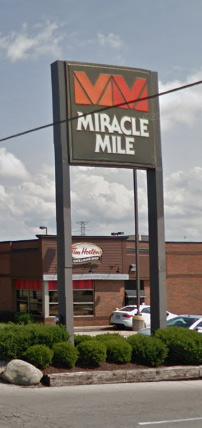
The idea of Miracle Mile originated with William G. Higgins Jr., a Cleveland realtor, who in November 1952 announced plans for “The Glass Mile,” which referred to the projected lavish use of glass throughout the center. Construction was to begin in April 1953 but ran into “obstacles,” according to The Blade.
Originally a 37-acre plot of Washington Township farmland owned by Norman Ramler, the property was acquired for $175,000 in July, 1953, and work on The Glass Mile started – slowly. Work picked up in April, 1954 when the Don M. Casto organization of Columbus acquired the property. Casto announced a $10 million shopping center would be completed on the site with the name “Toledo Town & Country Miracle Glass Mile Shoppers Mart.” Once Casto took over the property, the center was built rapidly.
“(The) shopping center philosophy of Mr. Casto, long in the building business, is that machinery has released a lot of manpower on the farms, that highways have been greatly improved, that autos are owned and use by just about everybody and that persons in droves are moving to the outskirts of cities. These factors, he contends, enhance chances for the success of regional centers which provide parking space for thousands of cars and a wide variety of businesses to serve most needs of families,” The Blade said. Spot on.
The Casto group gave it its Miracle Mile name after their first big shopping center in Columbus, the Town and Country Center Miracle Mile on E. Broad St. which is still there. “Looking over the center while it was still under construction, the young Casto (Don Casto Jr.) remarked that it was to be ‘A veritable mile of miracles,’ ” The Blade wrote. “And from that moment on, the Castos have retained the words Miracle Mile in the titles of many of their shopping centers built in other cities,” like this one in Monroeville, Pa., outside Pittsburgh.
It was eventually truncated to just Miracle Mile.
The Casto Organization, which is still in business, also built the Great Eastern Shopping Center on Woodville Road which, I gather from this YouTube video, is mostly empty now.
One odd rule in force at Miracle Mile was store hours. Stores opened at noon and closed at 9 p.m. except for the two grocery stores which opened at 9 a.m. That was the rule of the Casto Organization. All the stores were closed Sunday, which is unthinkable today.
Just by going from the ads in the 16-page special section in The Blade in Oct. 11, 1955, some of the retailers in the new Miracle Mile included the A.S. Beck shoe store, W.T. Grant Co., Kiddie Korner, Walgreen’s, Lake Shore Paint Co., Hobby Center, Jane Lee (women’s clothing), Keidan’s Jewelers, Cake Box Bakery, J.C. Penney, Shinner’s Meat Market, Crosby Shoes, Toledo Kitchen Mart, the Spitzer-Rorick Bank, Harry’s (a hardware/automotive store), Abele Decorating Company, Miracle Cleaners and Laundry, Woolworth’s, Kirby’s, a Kroger, and a Joseph’s Super Market (which once had 16 stores locally but has been reduced to but a memory except for Joseph’s Beverage Center on Talmadge Road).
Here is a YouTube drive through from 2017:
But prior to all that was the gala opening of the Miracle Mile Drive-In on November 25, 1954.
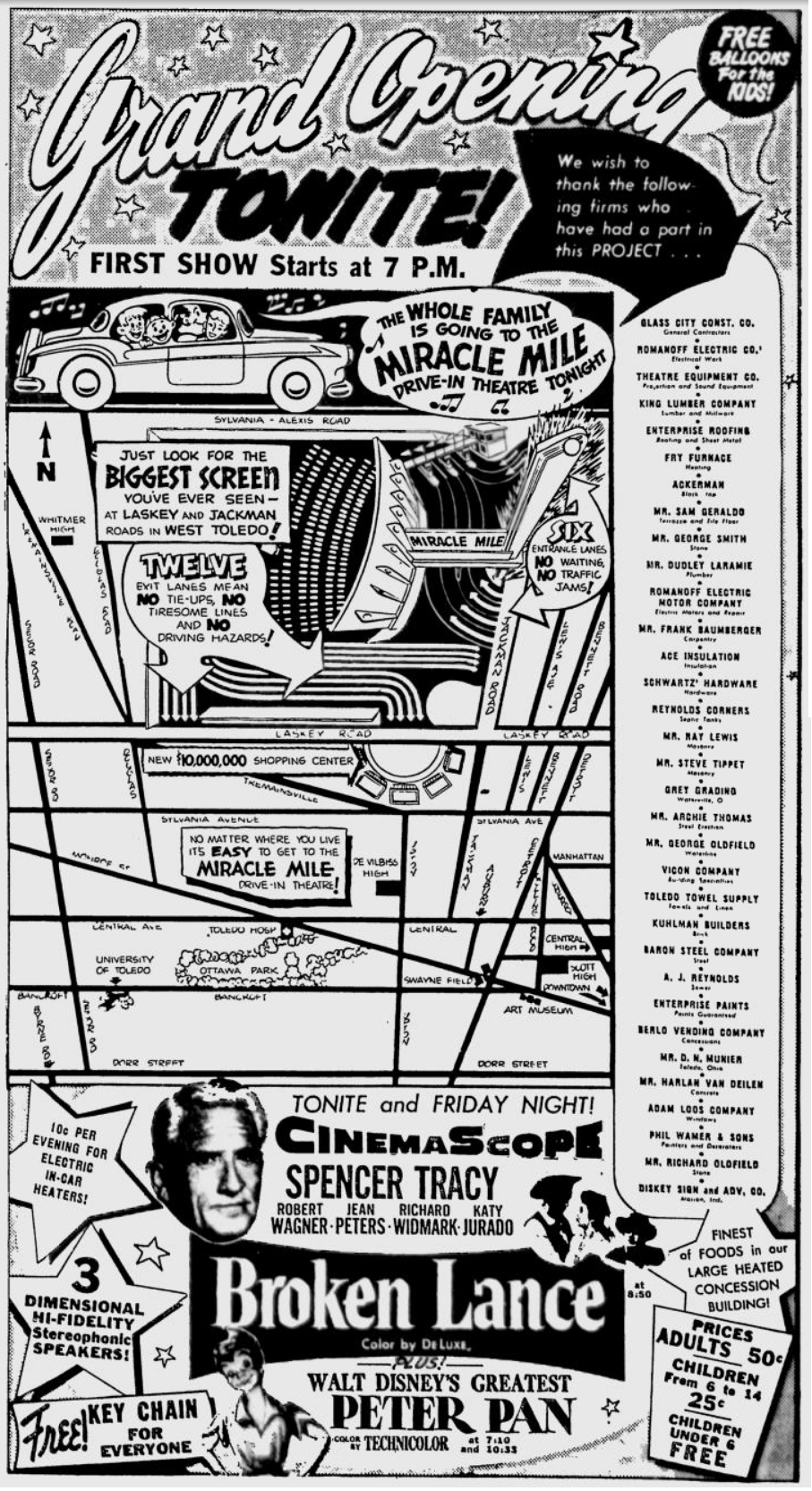
The theater’s screen covered 7,320 square feet, making it the third largest in dimension at the time in the country, and was mounted in a way so that it could stand hurricane-force winds, which was probably a good idea since the 1965 Palm Sunday tornado passed within a mile south of Miracle Mile.
Six entrances and exits could accommodate 1,750 cars, and the place was open year-round thanks to rental in-car heaters available for 10 cents.
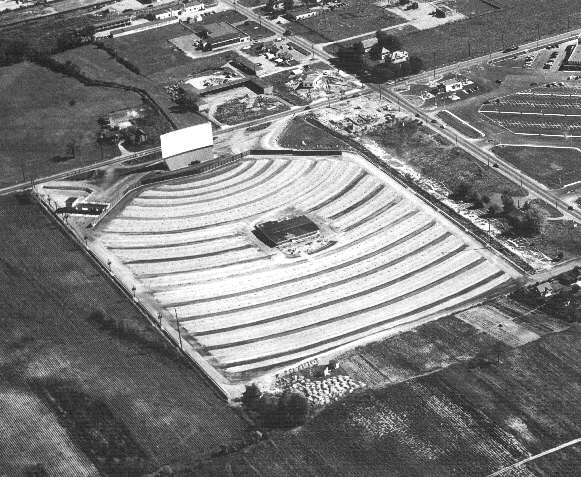
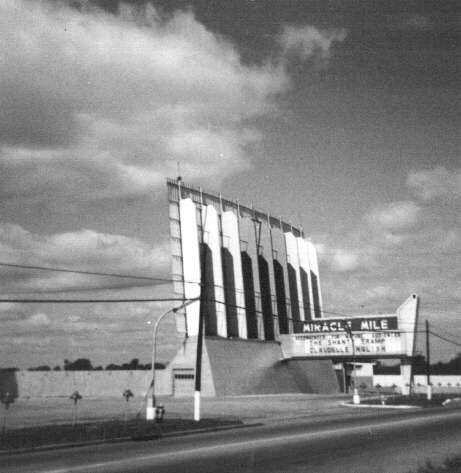
The original screen was destroyed in a spectacular early-morning fire in October, 1985 that caused $100,000 in damage. The drive-in closed at the end of the 1986 season and is gone now, according to cinematreasures.org, joining the ranks of the Maumee, Star Lite, Parkside, Jesse James, Franklin Park and others. It looks like, according to Google Maps, that there is an empty shopping center on the site now.
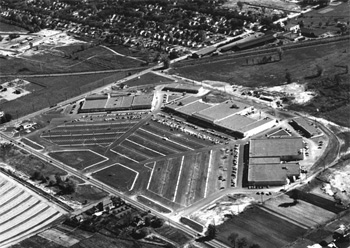
This is a fantastic blog, and I’m glad to have found it! I live in the Miracle Mile area (the neighborhood behind the old Cub Foods), and I’m delighted to report that the shopping center that sits on the old Drive In property is no longer completely empty! Get Air, a trampoline park, opened in the old Cub’s building last month.
played a lot of softball in Bowman Park behind the mall. My Mom worked for JCPennys for many years making slipcovers.
Does anybody remember the free standing building next to I believe W.T. Grant Co.? It was a small metal prefab building that housed a stand that sold mostly snacks. I was run by a man that was in a wheelchair.
The snack stand was called Yates Corn Crib to my recollection. The gentleman I believe had cerebral palsy. Very inspiring for a man in his condition.
That’s correct, I bought many bags of popcorn and snow cones in the summer at Yate’s Corn Crib. BTW, I recall the Corn Crib’s location was on the drive, between Woolworths and Walgreens.